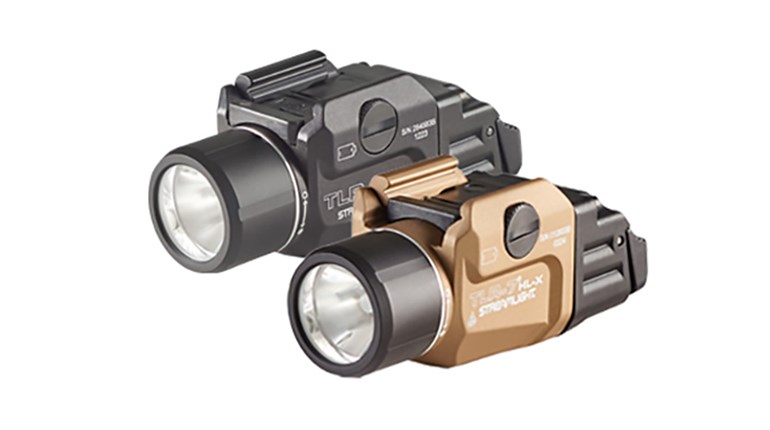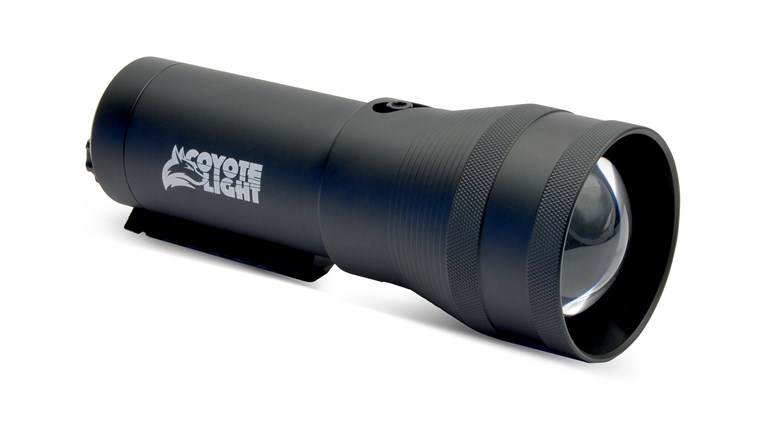
Over the last two weeks, we’ve presented a case for the bright, modern flashlight becoming part of your personal, portable defensive kit.
In Part 1, we pointed to some practical barriers to strapping a flash- or weapon-light on or with your carry pistol and simply proceeding. Holster implications, as well as deploying that light as a defensive tool in its own right, complicate some considerations. Part 2 amplified the uses of a light as a supplementary “stand-off” technology and tactic to your firearm, noting how its ability to disrupt night-adapted vision (and even day vision, if sufficiently bright) as well as to disorient can add precious seconds for other defensive actions. We wrap things up then, by returning to their primary function: To make aggressors more visible if and when shooting becomes the only defense to an assault.
If you’re fortunate enough to have a holster that accommodates a weapon-mounted light yet still permits sufficiently discreet and comfortable carry, what follows will be of merely intellectual interest. It simply doesn’t apply to your configuration. Remember, however, that your setup puts some limitations on how you can legally deploy the light when you don’t shoot: Because it’s on the gun, you may have “brandished” or “menaced” in the eyes of local law enforcement just in the act of illuminating. Food for thought, and caution.
For those who separate the light and firearm, the safe (for you) and effective manipulation of both implements now comes to the fore. For each of the following, we assume your draw (master/strong hand) and flashlight presentation (weak/off hand) have already occurred. Remember too, that if you’re in Cooper Orange, your light should already be out.
Neck Hold
Also called the “Neck Index,” this is generally the easiest to learn and to safely execute. The master hand presents the pistol toward the threat, while the weak hand forms a fist around the body of the light, bringing it up to a position just to the left/right of the neck and slightly above the collarbone (some put the index finger knuckle against the chin to amplify the “index”). The thumb of the weak hand is toward you over the end of the light, and presses the switch on an end-cap flashlight. This grip of the light is often referred to as a “spear” hold, as in a throwing spear or javelin. Neck Index: This is generally the easiest to learn and to safely execute.
Perhaps because this is the most elementary technique, we’ve heard it pooh-poohed on occasion. This is balderdash in our view: In addition to being easy to learn as well as very safe (no tendency whatever to sweep the light-holding hand with the muzzle of the firearm), it’s the least tiring even with wide variations in light size, diameter or weight. This means it’s likely to get practiced.
Tracking of head and gun-hand movement is all but reflexive (hence the “index” moniker), and allows peripheral illumination onto your sights. It adapts to side-button lights with equal facility, though we recommend activation of the switch in such instances with the ring-finger, not the far weaker “pinky.” Finally, if you have a crenellated bezel (a “striking” configuration as we discussed in Part I), no transition of hand position is required to use the light in such a fashion.
Like all the separate-light-and-firearm techniques, there are downsides: The light is near your head/body centerline, and could draw return fire; it limits you to one-handed shooting and very bright lights can cause “flaring” on your sights, though this can generally be solved by moving the light slightly outboard.
FBI Hold
Arguably two techniques with the same imprimatur: The master hand holds the firearm as before, while the light is held away from the body. Most commonly, this is demonstrated with the light held to the side, but a frequent variation puts the light over the head. Mainly, the method hopes to draw return fire away from the body, though the overhead variation remains on centerline. Here, a typical “stress” miss—the barrel pulled down by excessive trigger press as the shot breaks—would result in a shot toward the head. Like the Neck Index, recommended light grasp is “spear” style: The butt of the hand points away from the body. Certainly it’s a solid technique that can be adapted to either switch position, and carries a very distinguished pedigree.
Similar to Neck Index, there is little likelihood of sweeping the flashlight hand with the firearm, and the light can move with wide independence (though why you’d point the light on a different axis than the pistol is a legitimate question). Modern sharp/narrow beams may not spill peripheral light on the sights well, but flaring is then correspondingly rare. Certainly it’s a solid technique that can be adapted to either switch position, and carries a very distinguished pedigree.
Downsides though, are persistent. First and foremost, it’s tiring, particularly with a larger light. Tracking is also less instinctive, which makes it harder to learn, and the difficulties increase as the light is held further (higher or wider) from the body. If the side presentation is chosen, we recommend flipping the light around to a “sword” or thumb-forward grasp. This seems to improve tracking for many people, though your thumb is now necessarily off the switch of an end-cap light. Of course, you’re still shooting with only the master hand on the firearm, and outstretched limbs in either plane are no good in tight spaces.
Harries Hold
If pressed, this is our favorite, and for a simple reason: It has the fewest compromises in terms of shooting and in terms of lighting said shot(s). First, it requires us to diverge very little from our recommended stance and hand position, and therefore is “less” to learn in that important sense. Better still, it does not compel absolutely single-handed shooting and the accuracy/functioning problems which can result.
In its original form, the master hand held the firearm in “low ready,” while the light/weak wrist was brought up beneath the wrist of the master hand. The hands were then raised together, with the master wrist above and behind the light wrist from the shooter’s perspective. The wrists form a rough cross at just below chin-height, with the master hand/wrist closer to the shooter, and supported by the light hand/wrist. The ergonomics of most shooters result in all-but-automatic bore alignment of the firearm with the light beam, and pressing of the wrists against each other replaces a surprising percentage of the dynamic tension lost when the weak hand was co-opted to flashlight duty.
If you try this, you’ll encounter a potential Harries criticism. As the hands/wrists are joined in low ready, there’s a very real risk of sweeping the flashlight hand with the muzzle. This is eliminated by joining the wrists slightly later, much as recommended here (move the flashlight hand to the mid-abdomen “timing” position, and allow the gun hand to get in front). If you must move, especially in close quarters, Harries automatically tends to tuck elbows and pull hands in—all to the good.
Harries works well with a variety of light sizes, and with either switch type, though side switch lights require staging of the switch under the ring finger for decisive activation. (Remember: Don’t use that weaker pinky.) With practice, you’ll note that Harries has another often un-remarked advantage: It is physically compact. If you must move, especially in close quarters, Harries automatically tends to tuck elbows and pull hands in—all to the good. It’s also very good in three of the four “get off the ‘X’” directions, and maintains the light in a strike hold if quarters close.
It shares a deficiency of Neck Index, because the light is near your head/body centerline and can become an aiming reference for return fire. While it “spills” no light onto the sights as our other two candidates do, its superb bore alignment seems to allow the sights to silhouette—and therefore be aligned—well in the illuminated downrange pool your beam throws. Just our taste, maybe, but we prefer this to the risk of flaring with Neck Index, or inadequate spill in FBI. We occasionally encounter criticisms of Harries for “beam displacement,” but we think this is a reflection of insufficient practice.
We say goodbye to light techniques, at least temporarily, with a few caveats. We offered three possibilities, but this subset is by no means exhaustive. At least two others—from serious pros like Ray Chapman and Massad Ayoob—are known to us, and have their merits. We do think they cater to narrower specializations in equipment, or presume physical characteristics to a somewhat greater extent, but that’s hardly grounds for dismissal: It could be they’ll solve a specialized need or make better use of your preferred hardware. Fair enough.
Next, remember that these skills must be practiced. They aren’t as much fun as many others we’ve discussed but are, paradoxically, far more likely to keep desperate circumstances from escalating to encompassing disaster.
Lastly, we don’t lightly dismiss—ha, ha, ha—weapon-mounted illumination. Rather, and as we’ve acknowledged, their complexities for discreet and/or civilian carry make their application different than integrated configurations. In point of fact, a mounted light has many advantages, and for a “house gun” is arguably preferable. We’ll take a look at these before long.
Now Carry on.


































